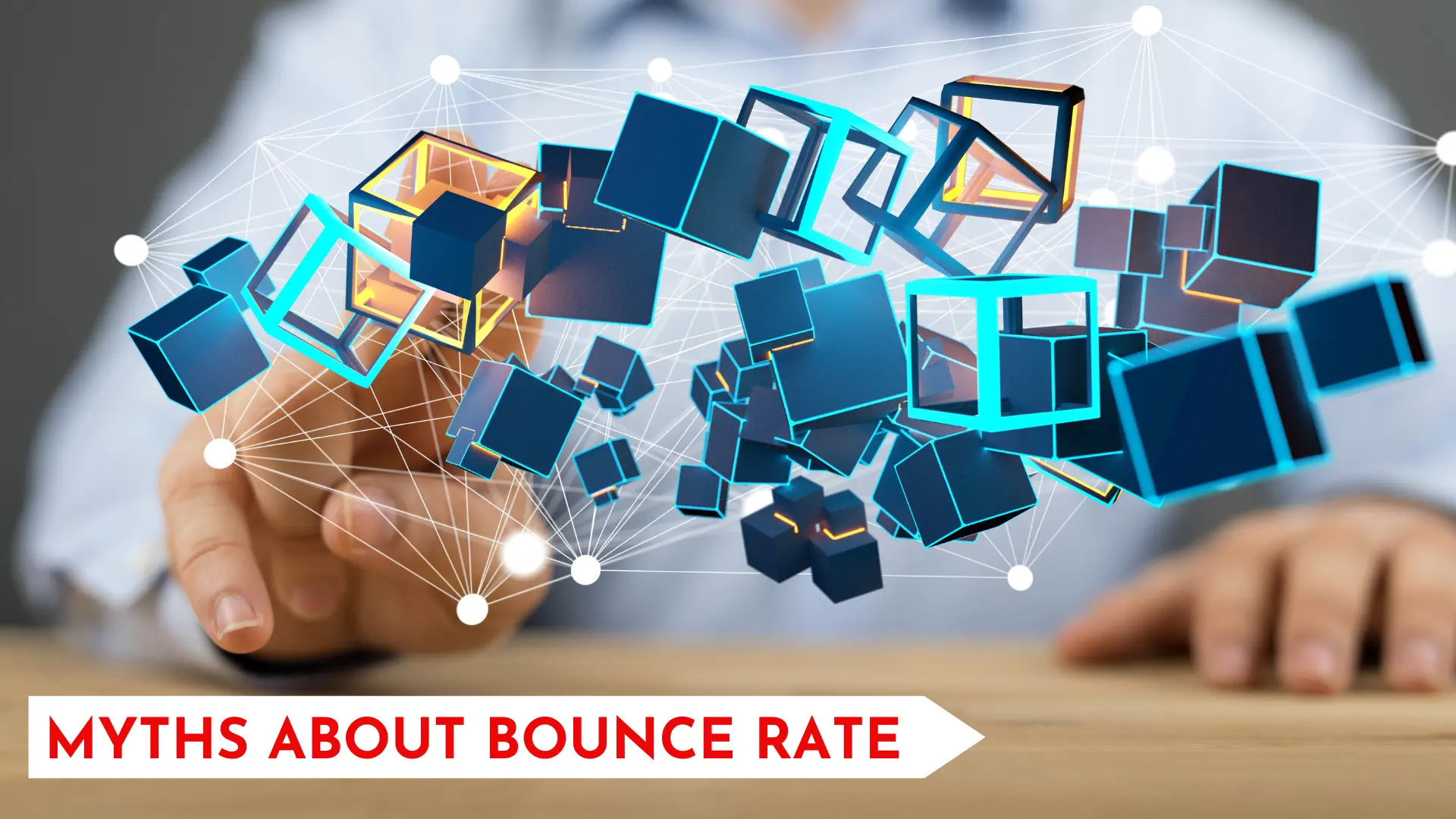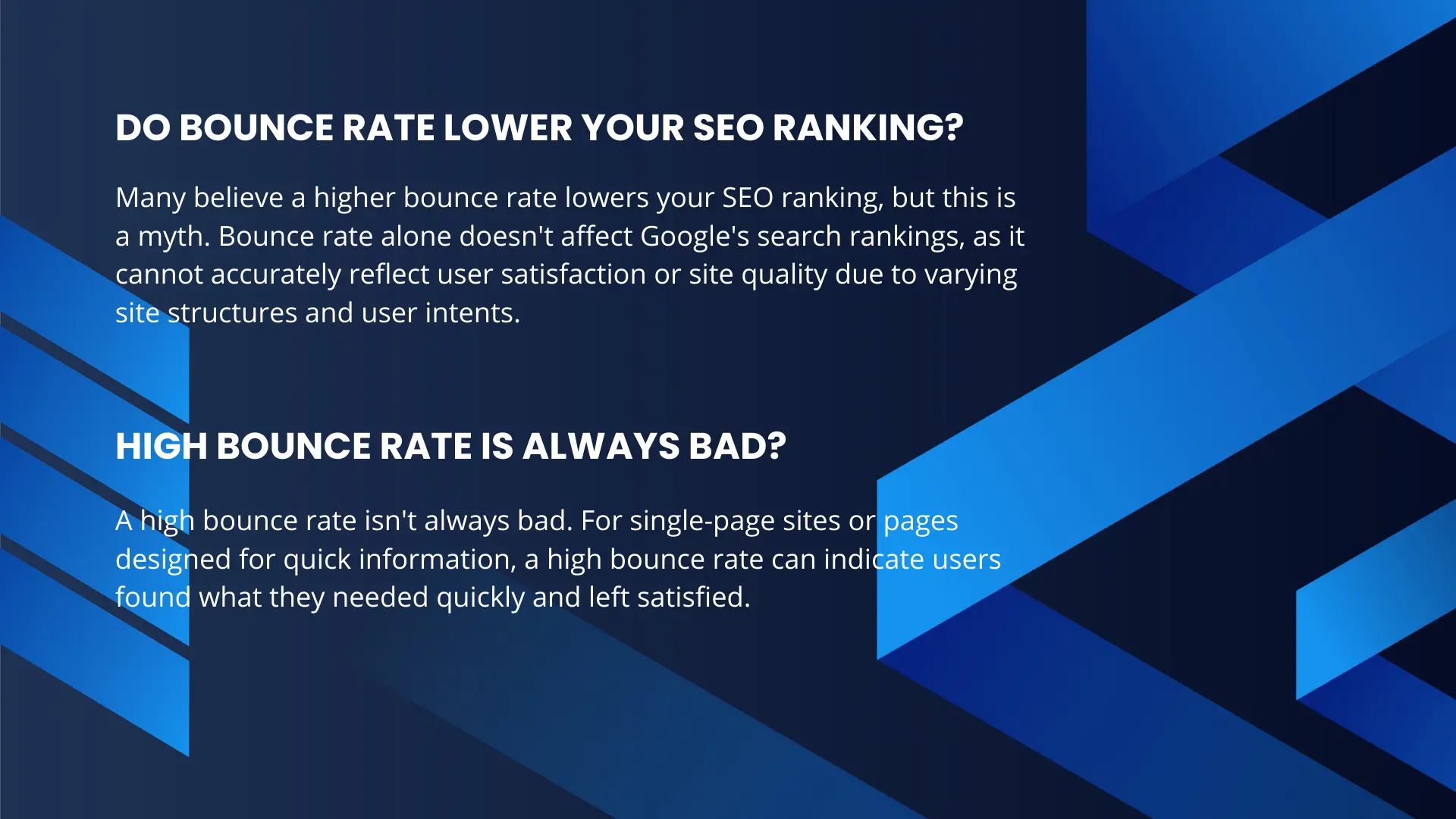Myths About Bounce Rate

Bounce rate represents percentage of visitors who leave a website from after viewing only a page. Customer satisfaction with a website is not always directly related to bounce rate. Many factors can have an impact on it, including website type, page type, traffic sources, device, content, and desired action.
A high or low bounce rate must always be considered with other metrics also like (conversion rate, time on page, pages per session, and user surveys) to get a deeper understanding of website users.
Here we will discuss some myths related to bounce rate, these myths always give headaches to new people who are working for a company or for their own website or blog page.
A High Bounce Rate is Always Bad
A high bounce rate is not always bad. It can point to problems if you have multiple pages in succession that users are not going beyond but it’s not necessarily an indicator of a bad user experience if the site is built that way. If a single page site or a landing page with user’s goal, like quick information like contact information, event details, etc. Bounce rate for these type of sites or pages will be high but that’s the intended user experience.
Also, if users are looking for a specific post on your blog and they find it on the first page, they might get the information they need and leave. Will really this mean that the site or the user experience is bad, No! it’s just the way the user intended to use the site.

Low Bounce Rate Indicates High User Engagement
Low bounce rates suggest that visitors are viewing multiple pages within your website, this metric alone should not be considered as a sign of high user engagement. A user could click multiple pages on your website in a few minutes, without engaging with your content.
Engaging with your content could mean reading a blog article from beginning to end, clicking links in your blogs, and spending considerable time on key sections of your web pages. Therefore, when analyzing user engagement, look beyond bounce rate to time spent on each page, click-throughs, and other user interactions.
Bounce Rate: The Lower the Better
Bounce Rate can be a tricky metric to interpret. If you have decent traffic and a bounce rate of 2%, there may be something wrong with your Google Analytics configuration. Users should visit at least two pages, especially on a multi-page website. Use Google Tag Assistant to see if you have any duplicate pageviews or events being fired via Google Tag Manager at page load.
If you have a super low bounce rate and everything looks good, you should investigate your CMS plugins to see if they are properly communicating with Google Analytics. Also, take a look at your user experience. Are users finding what they need easily or are they dropping off because your site layout is confusing? This can be a potential reason for a low bounce rate but may indicate larger issues with your website.
Bounce Rate Means Your Site Sucks
Well, not necessarily. Yes, bounce rate can expose problems on your website but it can also be normal on certain types of sites or pages. A high bounce rate on a site or page with a clear informational purpose is also to be expected because users easily find what they’re looking for and then leave. Context and user intent is everything.
If you have a page that simply serves to provide quick information to the user then a high bounce rate probably says that users got the information they wanted and were happy. So, don’t just focus on the bounce rate alone. Look at time on page, number of pages visited, and other metrics to develop a clear understanding of your site’s performance.
Bounce Rate is Solely an SEO Metric
While typically viewed as an SEO metric (bounce rate), it can also reveal much about your users and the usability of your site. High bounce rates can often mean slow page speeds, confusing or difficult to find navigation, or simply unattractive pages.
If your pages are difficult to navigate, have poor user experiences, or simply look unattractive, you can expect high bounce rates. when combined with other metrics, it can reveal much more valuable insight regarding your site and its performance in the ever growing online world.
Higher Bounce Rate Lower Your SEO Ranking
This one is the biggest myth in online marketing and it’s absolutely FALSE. There is no evidence that the Google Analytics bounce rate has any impact on your SEO ranking.
Bounce rate as a search ranking factor wouldn’t make any sense for Google. All websites are structured differently and therefore will always have different bounce rates. There is no way for Google to distinguish a good bounce vs bad bounce based purely on numbers.
Thanks For Reading: Myths About Bounce Rate
Partner With Naumaan Oman
Recent Posts
Working Together Ideas come to life
No matter how big your company is, as you expand and reach new highs you’ll want an agency to have your back. One with a process
360presence@gmail.com

© 2023 360PRESENCE All rights Reserved
















